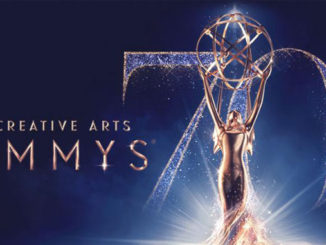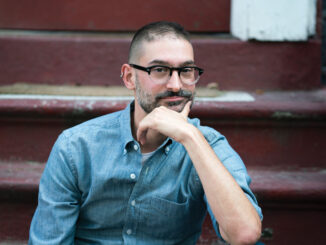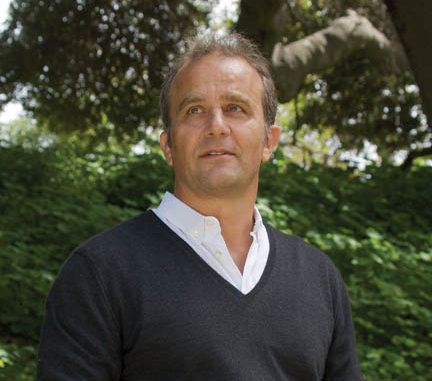
by Garrett Gilchrist • photos by Wm. Stetz
“Oh God, another Robin Hood? We’ve seen so many,” laughs Pietro Scalia, A.C.E.
The two-time Oscar-winning editor is discussing his latest project for longtime collaborator Ridley Scott––Robin Hood, which opens May 14 through Universal Pictures. “But this is a completely different take, an origin story going back to the historical context of the character,” he continues. “There is no true historical story; Robin Hood is a construct. We know the adventures, but we don’t know the man. Why has this story survived 700 years? It’s refreshing to find a reality, while keeping the tone of adventure and legend.”
Born in Sicily, Scalia lived in Switzerland before moving to Los Angeles to attend UCLA, where he received an MFA in Film. After serving as an assistant and an additional editor on several Oliver Stone films in the late ‘80s-early ‘90s, he was promoted to editor and immediately won the Academy Award for Best Editing (shared with Joe Hutshing, A.C.E.) in 1991 for Stone’s landmark film JFK. Scalia received his second Oscar nomination for Gus Van Sant’s Good Will Hunting in 1997, the same year he began his 13-year collaboration with Scott on G.I. Jane. Among the seven films the director-editor team created were Gladiator (2000), which won five Oscars––including Best Picture––and earned Scalia his third nomination, and Black Hawk Down (2001), for which he won his second Best Editing Oscar.
A decade after Gladiator, Scalia and Scott re-team with actor Russell Crowe for another larger-than-life heroic epic, Robin Hood. On the eve of the film’s release, Scalia talked to CineMontage about bringing this legend to life, as well as his collaborations and his career.
CineMontage: What was the main challenge in making Robin Hood?
Pietro Scalia: The story is very rich and complex; the struggle was to streamline all the various storylines into a focused and cohesive whole, with Robin at the center. It’s an adventure story and a romantic story. The heart of the film is the relationship between Robin and Lady Marion. Russell Crowe and Cate Blanchett are two fabulous actors who fit those roles perfectly.
CM: How does Ridley Scott approach the process as a director?
PS: Ridley is a cinematic virtuoso, a fine artist with a great visual gift. He has such a richness of ideas, an endless well of creativity, and he is absolutely capable of creating whatever he visualizes on a grand scale. There’s a basis of familiarity and trust with his close collaborators, the people he’s worked with over the years, which makes it easier to work through the logistics. Ridley expects everyone to be ready on the set, to do their own work, bring their own research and background. He leaves a lot of freedom of interpretation to the actors. When I do my first cut, I have my own interpretation of these very good performances––and by now Ridley and I are usually of the same mind.

Photo courtesy of Universal Pictures
CM: How would you describe your working relationship?
PS: Ridley gave me a lot of freedom, confidence and trust, right off the bat. My job––to be honest––is to speak my mind. He trusts my tastes about what works, and in what direction that takes us. We communicate in shorthand now.
For us, the editing process is a way to discover the film and characters anew, and to be able to shape it according to where the story takes us. We make continuous adjustments to character, eliminating a lot of dialogue––not to diminish a character, but to improve it. We sort through hundreds of ideas that could be contradictory, but which are all valid in certain ways as different facets of the same idea. We have to capture the essence. We need to always be surprised, to push that idea further into something unexpected, and to build on that idea.
CM: You started as an assistant editor on Oliver Stone’s Wall Street and worked with him on several films.
PS: It was a great experience, working on wonderful films. After my MFA at UCLA, Oliver Stone was my “school of reality,“ working with editors like Claire Simpson and David Brenner. Oliver taught me to be truthful and honest. He’s an excellent writer: extremely intelligent, well-read and worldly, as well as a driven and passionate man––as in Goethe, all Sturm und Drang. My background in film school was documentaries. I loved his Salvador, his sense of social realism, which reminded me of the neo-realist films that I grew up with and loved watching.
CM: Within five years, you and Joe Hutshing won an Oscar for JFK, famously deconstructing the assassination from multiple angles––”back, and to the left.”
PS: It was a daunting task. We weren’t working digitally, and we had every format you can imagine: Super-8, 8mm, 16mm, 1:85, 2:35, two-inch videotape… Perhaps it stood out because it was visible editing; we needed the viewer to see all the elements and the construct of the edit. A multiple viewing of the same thing in different ways, until you can deduct your own conclusion. It was a huge amount of information to condense, for us as well as Oliver. It’s removing everything to focus what’s essential. If it’s not necessary, if it doesn’t make a point, you must eliminate it.
That’s something that I carry with me throughout all my pictures. Structure is everything––the major anchor points that the story turns on, the solid base that your characters build upon. The original version was four hours and 20 minutes long. The investigation starts in New Orleans. Jim Garrison meets the famous Mr. X, who tells him to go back to Dallas. Later he meets Mr. X again, who says he’s now ready to go to trial. But the shifting of structure allowed us to remove an hour of material without losing the story. It’s condensed––scenes overlap, multiple actions happen simultaneously. In the final version, the New Orleans and Dallas investigations happen at the same time. He meets Mr. X only once.
CM: Did a similar thing happen on Robin Hood?
PS: First cuts are always too long, even if the scenes are cut to proper length. We had so much story, and it was over three hours. We lost an hour by reducing subplots and substories, but still reinforcing them somehow in a different way that makes the same point. Taking out everything you don’t need just makes everything around it so much better.
So why didn’t we do it the first time ‘round? Because you don’t know––it can only happen organically as the film evolves. I might re-cut a reel 50, 60 times, because if we change a scene it affects every scene after. We are at the service of story and character.
CM: You worked with Bernardo Bertolucci on Little Buddha.
PS: My next experience with a master. He was so calm––the opposite of Oliver. Just as passionate, but expressing this passion in much gentler ways. There was no rush, nobody with a gun on his back. It was a homecoming to Italy for me, to a world of filmmaking that I had admired for so long as a child. He enriched my life with stories of great European directors from Rossellini to Pasolini to Godard. It was about living in the moment as much as the film itself.
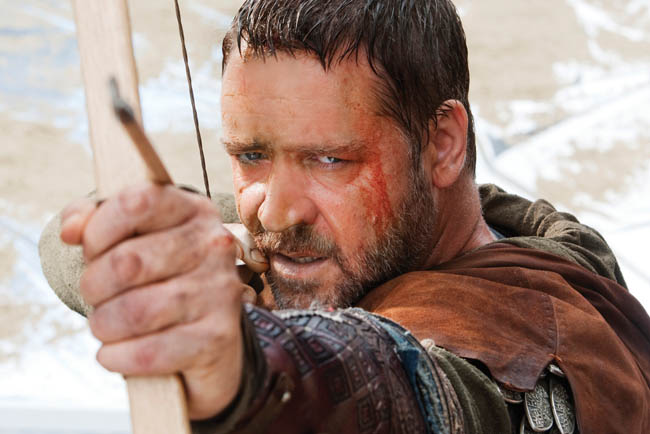
Photo courtesy of Universal Pictures
CM: You also worked with Sam Raimi on The Quick and the Dead, who breaks every action down into its own shot.
PS: Absolutely. It was wonderful working with Sam, and you’re right––it was a different way of making films. He had organized every shot with detailed and specific storyboards. I remember the first time we spoke on the phone and he told me how many cuts were going to be in the film [laughs]. “Can you handle that?” It was hilarious! I said, “How can you possibly know how many cuts you have?” But he had it all figured out. He’s just like Hitchcock; he knew exactly what to shoot.
Still, film is unpredictable. You have to improvise because things change on set. My greatest joy comes when we rediscover the film in the cutting room. We had finished Gladiator; we had a good opening, but then I saw this image of a hand over wheat. I’d learned from Bernardo to use images as poetry, even in an action film. When Ridley saw it, he said, “That’s it!” It was a poetic but also an essential, thematic image. It’s open to interpretation, but for me it says, “Like any hero’s journey, this is a transformation of the person.”
CM: Can you talk about Gus Van Sant’s Good Will Hunting?
PS: I’m a great fan of Gus’ work since his first film, Mala Noche. He liked my background, working with Oliver, and it turned out he was a big admirer of Bertolucci–– La Luna and The Con-formist are two of his favorite films. I really responded to the Good Will Hunting script. I was laughing throughout it. It was like a Billy Wilder movie––a light, comedic drama based on sharp, witty dialogue.
When I met Matt Damon and Ben Affleck, I had really stepped into the movie. Having written the script, they could easily improvise and still stay within the characters and the essence of the dialogue. It wasn’t a documentary, but we were capturing something that felt real––the accents, how they spoke on top of one another. Working digitally with the Avid, I could splice words together from different sentences, different takes, different inflections. With mag, it would’ve been much more cumbersome; you couldn’t try as many variations.
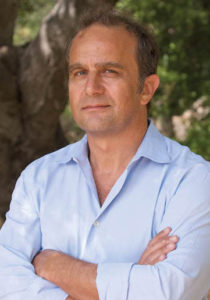
CM: During the shooting of Gladiator, actor Oliver Reed, who played Proximo, sadly passed away. How were you able to work around that?
PS: It was so sad, and at the same time sad for his character. It was such a great performance. Everyone was obviously panicked, but we wanted to save the character. We wanted Proximo to somehow redeem himself, freeing Maximus from prison. I looked through every single piece of footage we had.
At that point, we weren’t too sophisticated in terms of CGI, but we asked John Nelson, our visual effects supervisor, “Can we change this from day to night? Can we put a shadow here? Can we change his clothes, change his hair?” The line “You will win your freedom” became “You have won your freedom.” Russell added the perfect line, on the spot: “Proximo, are you in danger of becoming a good man?” Oliver goes, “Ha!” and walks out of the frame. At that moment we had a scene. It was miraculous. And worth it, for Oliver’s character.
CM: Do you prefer hand-held, shakier camerawork, or more smooth motions and locked-down angles?
PS: They’re both valid forms of storytelling; they just create a different perception of reality. It’s the director’s choice. Bertolucci glides the camera in long, lyrical uninterrupted takes; the camera has a sense of storytelling. Shooting hand-held, you’re grabbing instances of reality. It’s a cubist form; you see it from many different angles and still get a sense of shape. What I don’t agree with is when the camera moves for no particular storytelling reason––”the camera is shaking because this is a documentary”––it becomes a cliche. Movement is essential; it guides the eye, keeps the mind interested.
Black Hawk Down was shot documentary-style with multiple cameras. The action took the place of dialogue. It’s not a given what is shot one, two or three. The explosions were actually happening, and the actors react to that––the sound, the weight on their back as they’re running, the guns, the helicopters above, the dust blowing up. It feels real because it was. Ridley is a master of that, creating the backdrop and capturing the reality.
My task is to make sense of it all––not only for the characters, the movement and the action, but also geographically; the viewer should be inside the battle, immersed in it.
CM: Do you have a personal style and approach to editing?
PS: We hear people described as action editors, dialogue editors, comedy editors… It’s ridiculous––we’re all editors! Every film is a different challenge, with its own set of problems. I just love that creative process, and think anything is possible. As an editor, you can distill the best from the material to the point that you completely transform it so that the initial footage is no longer recognizable.
Film combines all the art forms––drama, theatre, photography, dance, music, architecture––but editing is very special and specific to film. It was borne out of film; it didn’t exist before that. There’s no other art form like it.
Garrett Gilchrist is a freelance writer and filmmaker. He can be reached at www.orangecow.org.



